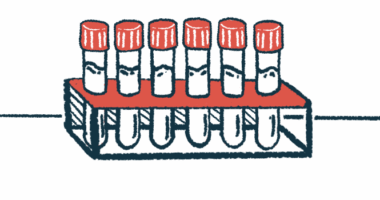Qalsody halts disease progression in SOD1-ALS patients: Study
Real-world study shows improved functional independence, mobility

Qalsody (tofersen) halted disease progression and improved functional independence and mobility in people with amyotrophic lateral sclerosis (ALS) who received the treatment in a real-world setting, according to a study involving seven patients carrying mutations in the SOD1 gene.
Data also showed robust and sustained declines in markers of neurodegeneration after treatment initiation, suggesting the therapy can reduce damage to motor neurons.
The study, “Tofersen treatment leads to sustained stabilization of disease in SOD1 ALS in a ‘real-world’ setting,” was published in the Annals of Clinical and Translational Neurology.
ALS occurs when motor neurons — the nerve cells that coordinate voluntary muscle movements — become damaged and progressively die, leading to muscle weakness and gradual loss of movement. This is sometimes caused by genetic mutations that result in a faulty version of the SOD1 protein.
Qalsody contains a lab-made antisense oligonucleotide, a small strand of genetic material, that prevents the production of SOD1 from its genetic instructions. By reducing the amount of faulty SOD1 in motor neurons, Qalsody is expected to ease the damage caused by the abnormal protein, improving long-term outcomes for patients.
Slowing disease progression
In a Phase 3 clinical trial, the therapy significantly slowed ALS progression, while also reducing declines in muscle strength, lung function, and quality of life.
Researchers at Washington University School of Medicine in St. Louis reported data from seven adults (five men and two women) with SOD1-ALS who received Qalsody at their institution as part of an expanded access program (NCT04972487) sponsored by Biogen, the treatment’s developer.
All seven had slowly progressing ALS, defined by a decline in ALS Functional Rating Scale-Revised (ALSFRS-R) score of fewer than 0.9 points per month. Patients were losing 0.36 ALSFRS-R points each month on average.
Patients had been living with ALS for 62.7 months, or just over five years, before starting Qalsody. Their mean ALSFRS-R score was 35.1. After about 1.5 years of treatment, that score increased slightly to 36.5 points, indicating a better ability to perform day-to-day activities rather than a decline, as would be expected for this population.
“There was notable improvement in functional independence,” the researchers wrote. On average, the functional independence motor (FIM) score increased by 5.13 points. The FIM scale rates functional status based on the level of assistance patients require, with a higher score indicating more functional independence.
After initiating Qalsody treatment, levels of neurofilament light chain (NfL) in the blood, a marker of nerve cell damage, more than halved for most patients. Another nerve cell damage biomarker, phosphorylated neurofilament heavy chain, dropped by an average of 67.6% in the cerebrospinal fluid (CSF), the liquid that flows around the brain and spinal cord.
“These findings were accompanied by an apparent slowing of motor decline and preservation of function, as measured by the ALSFRS-R, and improvements in functional independence,” the researchers wrote.
In line with the most common side effects reported with Qalsody during clinical testing, all patients experienced increases in white blood cell counts in the cerebrospinal fluid at some point during the course of treatment. Why this happens “remains unclear,” the researchers wrote.
Three patients experienced muscle pain and soreness 1-2 days after a dose of Qalsody. This occurred in the hips, thighs, or legs, sometimes with shooting pain. Symptoms varied in timing and consistency, but resolved within days with acetaminophen or ibuprofen.
“Our clinical experience shows robust, significant, and sustained reductions in serum and CSF neurofilaments in SOD1 ALS patients treated with tofersen,” the researchers wrote. “These results are highly encouraging and recapitulates the effects demonstrated in” clinical trials, they wrote.







